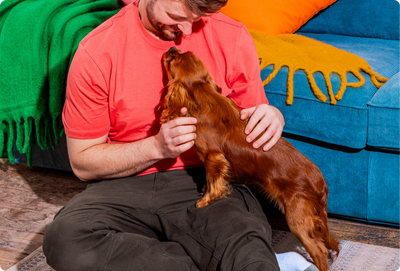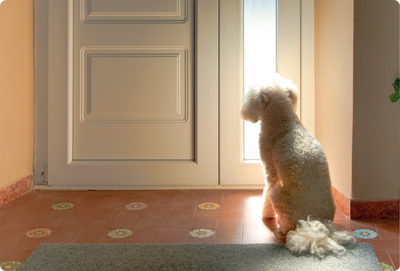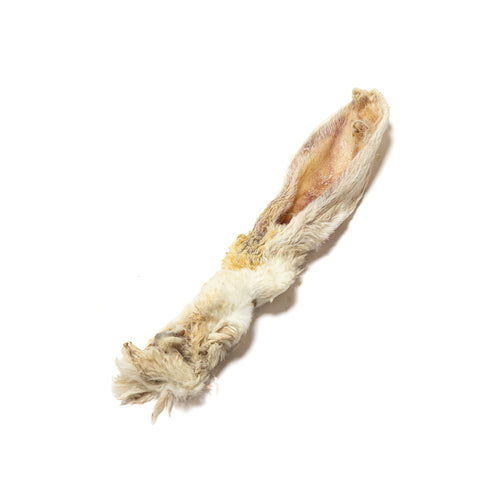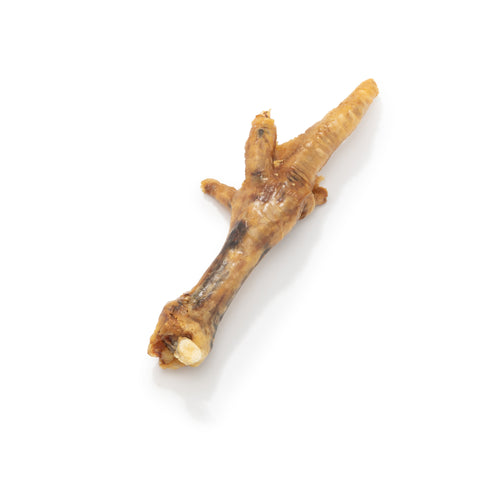
(Written by Georgia Hatton)
Approximately 10% of the world’s human population is left handed. From ticket barriers at train stations being on the right hand side of the gate, to scissors that don’t cut when used in the left hand - lefties face a host of daily inconveniences in a world designed for right handed people. The 13th of August is also known as international left handed awareness day - a day set aside to highlight the difficulties that 1 in 10 people face every day.

This can apply to dogs as well!
Animals who use their forelimbs for tasks, such as rodents, primates and dogs, demonstrate signs of preference in handedness, and in 2021 the largest study of its kind was carried out, examining the paw preference of dogs.
Led by Kirsty Laverack of Lincoln University, and through the use of an online survey put out to dog owners across the country through the BBC, 17901 dogs were tested.
To determine a paw preference, owners were asked to find a tube big enough for the dog to reach its paw in. The owners were instructed to place a treat at the end of the tube, so the dog had to reach in with its paw to pull it out. In total, this was repeated three times per dog.
Owners were asked to record whether the dog preferred to use their left, right paw or whether they didn’t show a preference for either. The gender of each dog was recorded, as well as the age category - whether they were a puppy, young adult, adult or elderly.
Overall, 74% of dogs showed a preference for one paw, meaning 26% are ambidextrous - compared to just 1% of humans.
Of the dogs that showed a preference for using a specific paw, a small majority, 58.3%, were right pawed, whilst 41.7% were left pawed. This is a much smaller difference than the 90/10 divide seen in humans. One factor might be that humans face strong societal pressure, such as learning to write in school, to be right handed, whilst dogs don’t care, and very few humans will work to train their canine companies to use a different paw.

Photo by Natalie Parham on Unsplash
Gender also appears to affect paw preference - of the female dogs studied, 39.3% were left pawed compared to 43.9% of male dogs. This matches research into humans, which suggests that left handedness is more common in males than females - this suggests that a preference is linked sex hormones, but more research is needed to find out!
Interestingly, as male dogs get older the proportion of left pawed decreases, but this effect isn’t seen in female dogs.
Why does it matter?
Coming back to humans - it is known that handedness isn’t due to the structure of the hands, but due to the hemispheric structure of the brain, and the crossing over of neurons in the brain. The left hand side of your body is controlled by the motor cortex in the right side of the brain and left-handed people have a more developed right-sided motor cortex. The same, but mirrored, occurs in right-handed.
The left side of the brain is the centre for emotional responses for calmness and positive thinking, whilst the right side is where emotions like fear are more likely to be expressed. This has led to the school of thought that right handed people are calmer, and left handed people are less so. The evidence for this is mixed, but it is true that convicted criminals and patients with severe mental health conditions, such as schizophrenia, have a higher probability of being left-handed.
There is the potential for a similar link in dogs. One study found that dogs who exhibited a preference for their left paw were more likely to exhibit fearful or aggressive towards strangers than right pawed dogs; whilst right pawed guide dog puppies are more likely to qualify as working dogs.
Currently, it’s just a fun little thing for owners to find out about their dogs - Zym is left pawed, but it will be interesting to see if that changes as he gets older!






























